It’s easy to get stuck in ruts, isn’t it?
Even thinking about books (particularly theological books), I essentially have to force myself to read books by people I don’t know as I’m often stuck in a rut. It’s easy for me to fall back on old favorites like Marcus Borg , Brian McLaren
, Brian McLaren , Bart Ehrman
, Bart Ehrman , John Dominic Crossan
, John Dominic Crossan , etc. even though they often say the same things again and again. If I run across an author that I am not familiar with, I’ll look on the back of the book for endorsements by some of my faves, and if there are endorsements by those I don’t trust, I’ll pass!
, etc. even though they often say the same things again and again. If I run across an author that I am not familiar with, I’ll look on the back of the book for endorsements by some of my faves, and if there are endorsements by those I don’t trust, I’ll pass!
Sometimes, though, a new author (to me) won’t have such an endorsement. I then look at the publisher as there are some publishers I will typically pass up, some that I will typically trust, and some that I’m careful with.
But what do I do when I’m not familiar with the author or publisher, and there is no endorsements by folks I trust? I’ll look at the brief biographical information. What seminary did they attend? What denomination are they affiliated with? What are they interested in?
Sometimes after this less-than-in-depth search, I’m still left with unanswered questions, and unless something about the book or its description has piqued my interest, I generally pass. That is exactly what happened with this book initially.
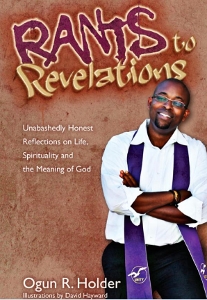
 TheSpeakEasy.info had offered Rants to Revelations: Unabashedly Honest Reflections on Life, Spirituality, and the Meaning of God
TheSpeakEasy.info had offered Rants to Revelations: Unabashedly Honest Reflections on Life, Spirituality, and the Meaning of God by Ogun R. Holder for review. After doing my less-than-in-depth search, I was left with too many unanswered questions. I didn’t know the author, I didn’t know the publisher (Unity
by Ogun R. Holder for review. After doing my less-than-in-depth search, I was left with too many unanswered questions. I didn’t know the author, I didn’t know the publisher (Unity ), there were no endorsements, and I didn’t know anything about his denomination (Unity). On top of all of that, it just didn’t pique my interest.
), there were no endorsements, and I didn’t know anything about his denomination (Unity). On top of all of that, it just didn’t pique my interest.
A short time later, SpeakEasy.info offered another book I wasn’t interested in and noted that they still had copies of Rants to Revelations. I passed again. Shortly after that another book was offered, and again, it was noted that copies of this book were still available. Honestly, I felt sorry for Holder since it appeared (at least on the surface) that not many people wanted to try his book. Then I noticed that the book included illustrations by David Hayward (aka The Naked Pastor), someone I’ve seen many religious cartoons from. So, this time I requested a copy and got it.
Honestly, I remained skeptical until page 8 when I read these words about prayer:
I started to see that prayers weren’t just words. Any action that expressed my divine nature was, in effect, a prayer. When I was in service to others, I was being a prayer. When I was immersed in any experience that let me touch the depth and vastness of what lay beyond what I could perceive with my senses or imagine with my mind, I was in prayer. When I would sit at the piano and let my fingers effortlessly play notes that transported me deep within myself, I was praying.
It was then that I knew I had met in this book sort of a kindred spirit. The road of life and faith isn’t simply about talk but action.
In story after story from his own life, we see a man who kept finding himself in various ruts: unfulfilling job, non-edifying religious tradition, doubts, rebellion towards family and God, marital difficulties, and more. Yet, time and again, we see how God was active in his life and especially in himself to bring him new insights about himself, others, and God, to bring about transformation and growth. Each time, he is pulled out of the rut by working with God to the point of finding himself back on that narrow path of life and faith, hopefully with new knowledge to help him avoid other ruts on the journey.
I enjoyed his willingness to be vulnerable and (I assume) to be honest in telling his own story in relation to God, his loved ones, and himself. By doing so, I think he makes it easy for a reader to be able to relate to at least some part of his life story. Plus, his writing style felt very conversational and thus very readable. I really hope people will decide to try this book as I think it can be helpful for those wanting to discover their God-given potential in life, relationships, and ministry (lay and clergy).
About the Author:
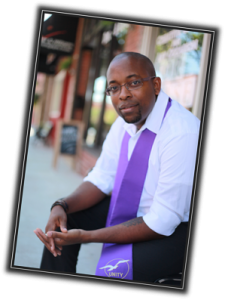 Ogun R. Holder is an ordained Unity Minister. His many titles include speaker, teacher, author, radio show host, blogger, musician, husband, parent, social media consultant, and self-proclaimed geek.
Ogun R. Holder is an ordained Unity Minister. His many titles include speaker, teacher, author, radio show host, blogger, musician, husband, parent, social media consultant, and self-proclaimed geek.
He’s written articles for Unity’s Daily Word [about 3,000,000 readers], Unity Magazine, and Contact Magazine. He also co-hosts Unity Family Matters a Unity Online Radio show about conscious parenting with my wife Rev. Jennifer Holder.
Holder is also the Executive Director of Unity For All, a nonprofit on a mission of Global Transformation through Spiritual Education, Empowerment, and Engagement, and he’s had the honor of speaking at churches and spiritual centers across the country.
Originally from Barbados, he moved to the USA in 1994 to pursue a degree in Music Therapy. As a Music Therapist he worked successfully with a variety of populations in schools, hospitals, adult day-care facilities, and in his own private practice.
He currently live in the Washington, DC metro area with his wife and their daughter Joy.
Disclosure of Material Connection: I received this book free from the author and/or publisher through the Speakeasy blogging book review network. I was not required to write a positive review. The opinions I have expressed are my own. I am disclosing this in accordance with the Federal Trade Commission’s 16 CFR,Part 255.


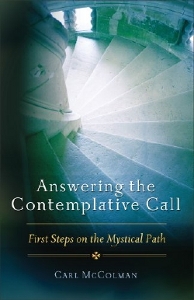
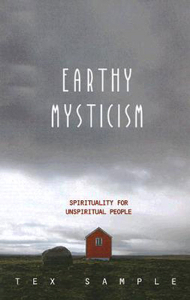
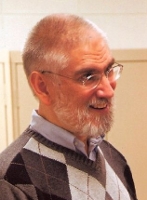
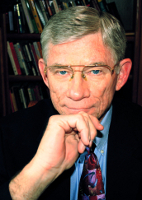


 A living stone is one that is “willing” to be molded into another form. It is vulnerable, allowing another to shape it in a new way. One need only look at the snaking of the Colorado River in a satellite view of the Grand Canyon to see the “dead stone” that refused to yield to the water that was attempting to shape and use that which was stripped away for another purpose. And yet, the beauty of the canyon displays the living character of the stones that have been sculpted by the water.
A living stone is one that is “willing” to be molded into another form. It is vulnerable, allowing another to shape it in a new way. One need only look at the snaking of the Colorado River in a satellite view of the Grand Canyon to see the “dead stone” that refused to yield to the water that was attempting to shape and use that which was stripped away for another purpose. And yet, the beauty of the canyon displays the living character of the stones that have been sculpted by the water.
 Ogun R. Holder is an ordained
Ogun R. Holder is an ordained